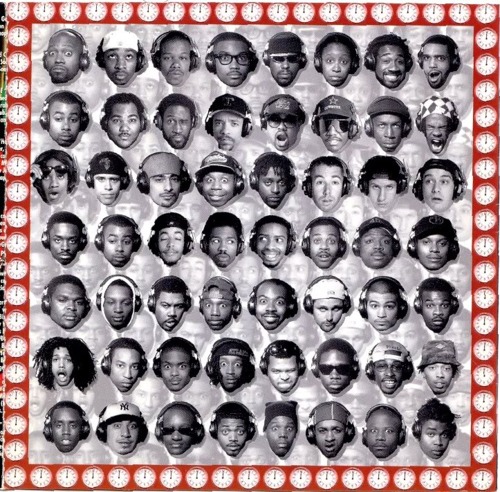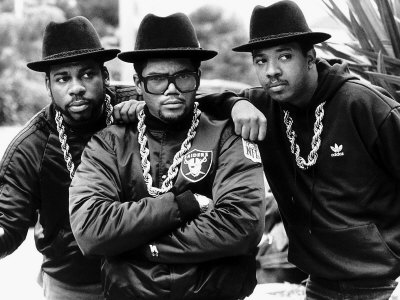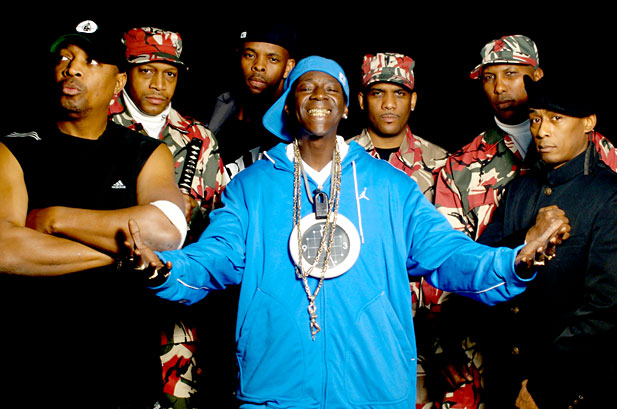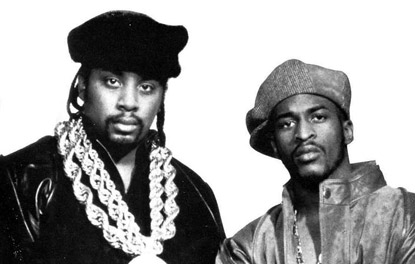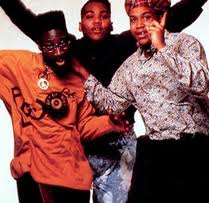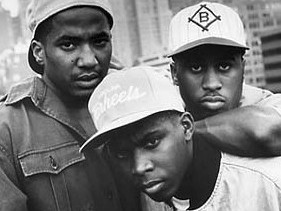Tune in to a Top 40-radio station, right now, as you’re reading this. You’ll probably hear something along the lines of “That sh*t cray” or “They know, they know, they know.” Today’s youth, including myself, have grown up with the sounds of this genre. Whether it be the sample-heavy sounds of Kanye West, Common’s thought provoking lyrics, even the shock value that Tyler, the Creator and Odd Future, brings the genre of hip-hop/rap is bigger and more lucrative than ever.
Larger than life profits and millions of adoring fans weren’t always the norm for this genre: no, hip-hop/rap had humble beginnings. It developed as part of the emerging hip-hop culture during the 1970s; a subculture defined by MCing/rapping, among other elements like sampling and beat boxing. A world away from today’s “Beamer, Benz, and Bentleys,” the genre’s pioneers spit knowledge on the tribulations society was facing, tribulations that were largely unknown to the general public.
Run-D.M.C.
I mean, let’s just go down the list: they were the first rap artist’s with gold (Run D.M.C.), platinum (King of Rock), and multi-platinum (Raising Hell) records. They were also one of the first in the genre to receive a Grammy nomination, the first to appear on the cover of Rolling Stone, and even though it’s hard to believe that MTV’s programming consisted mainly of music videos back in the day (not a knock on Run’s House, I loved that show!), Run-D.M.C. were the first rap act to have a video appear on Music Television. Jam-Master Jay, D.M.C, and Run introduced the world to gold chains, white Adidas sneakers, street wear, and countless other elements of hip-hop culture. No longer active due to the death of member Jam-Master Jay in 2002, Run D.M.C. continues to stay relevant in not only hip-hop but also pop culture. In 2009, the rap collective was inducted into the Rock-and-Roll Hall of Fame becoming only the second hip-hop group inducted, cementing their hip-hop pioneer status.
Check Out: “It’s Like That“
Public Enemy
Before Flavor Flav became a reality-TV darling, he was the hype man for Public Enemy. Characterized by their loud, bombastic sound, this Long Island collective’s contributions to the genre came in the form of politically motivated music. There was music before Public Enemy with Afrocentric themes with artists like Gil Scott-Heron leading the pack, however no one took it quite to the level of Public Enemy. The celebration of these themes became commonplace during the 80s, aka the “golden age of hip-hop,” because of the success of Public Enemy. From 1987-1994 Chuck D, Flavor Flav, Professor Griff, Terminator X and their in-house producers the Bomb Squad, were the biggest draws in the hip-hop community. Their politically charged music is considered some of the most influential in the hip-hop/rap community.
Check Out: “Fight the Power“
Eric B. & Rakim
Albeit not the originators, Eric B. & Rakim made the relationship between an MC and his DJ a special one. At their height of success, this Long Island duo was considered as the premier DJ/MC combination in rap. Their music was highlighted by trademark James Brown samples, the furious scratching of Eric B. and unparalleled lyricism that coined the term “Rakim is your favorite rapper’s favorite rapper.” The duo’s debut record, Paid In Full, is considered a benchmark rap record. This record set the blueprint for dynamic rhyming techniques and sample-heavy production that would become synonymous with the music coming out of New York for years to come.
Check Out: “I Know You Got Soul“
De La Soul
Posdnuos, Trugoy, and Maseo, better known as De La Soul, got together in high school in Long Island. This trio led a new wave of rap music, better-dubbed “alternative hip-hop,” that carried serious crossover appeal. With their debut, 3 Feet High and Rising, De La Soul impressed not only the hip-hop community but the music community as a whole, earning rave reviews and ending up on many end of the year lists (1989). It’s important to note that this was around the time of not only the gangsta rap boom, but also the height of the crack epidemic in urban neighborhoods. De La Soul instead opted for little profanity, with lyrics that promoted positivity and empowerment over samples of Steely Dan and Johnny Cash among others. The infamous hip-hop skit is also credited as a De La Soul original, and just for some perspective regarding the influence of 3 Feet High and Rising; it was among 25 albums chosen as additions to the Library of Congress’ 2010 National Recording Registry.
Check Out: “The Magic Number”
A Tribe Called Quest
Along with De La Soul, A Tribe Called Quest were founding members of the Native Tongues collective that embodied open minded lyrics and Afrocentric empowerment. This rap collective from Queens composed of, Q-Tip, Phife Dawg, Ali Shaheed Muhammad, Consequence, and occasionally Jarobi White, helped pioneer conscious hip-hop. With the use of diverse samples, A Tribe Called Quest at times sound more jazz than rap. This is most evident on their first three LPs: People’s Instinctive Travels and the Paths of Rhythm, Low End Theory, and Midnight Marauders, the latter two considered as benchmark records. They released two more full lengths after Midnight Marauders, however the passion seemed to be fading and the group split in 1998 to pursue solo ventures. The album art for Midnight Marauders (pictured at top of page) is curious in that it features 71 different hip-hop icons and radio DJs, and it sort of served as a bookend on an era of hip-hop known as the “golden age,” opening the door for the Nas’, Tupac’s, and Biggie’s of the world.
Check Out: “Electric Relaxation“

